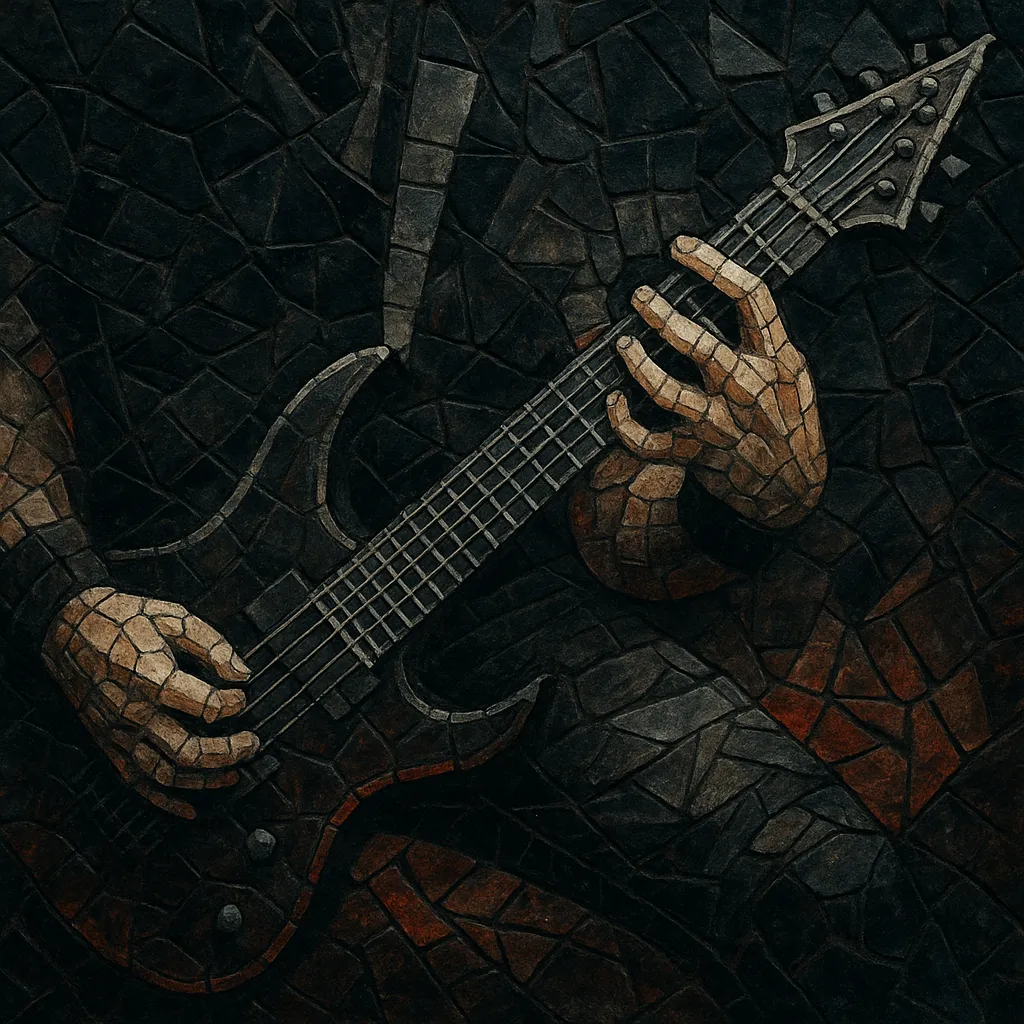Djent is a substyle of progressive metal defined by ultra-tight, low‑tuned, palm‑muted guitar riffs that create a percussive, onomatopoeic "djent" sound. It favors extended‑range instruments (7–9 strings), precise rhythmic subdivision, and a highly articulate, modern production aesthetic.
Sonically, djent emphasizes polyrhythms, syncopation, and metric modulation, often pairing dense, chugging grooves with ambient clean guitars, spacious synth pads, and melodic choruses. Vocals range from harsh screams and growls to soaring cleans, while drums and bass lock tightly to the rhythmic grid, accenting the guitar’s staccato patterns. Although the term took off online in the late 2000s, the core rhythmic and timbral blueprint traces to the 1990s work of Swedish band Meshuggah.
The rhythmic DNA of djent originates with Meshuggah (Sweden), whose 1990s albums introduced low‑tuned, polyrhythmic, staccato riffing and highly mechanized production. While not using the term themselves, their approach—extended‑range guitars, polymeters, and drum‑guitar lockstep—established the sonic template many later associated with “djent.”
In the mid‑2000s, bedroom producers and guitarists on forums like SevenString.org and communities on MySpace/SoundClick iterated on this sound using amp simulators and DAWs. The term “djent” (an onomatopoeia for the muted guitar attack) was popularized by Misha Mansoor (Periphery) and spread rapidly online, describing both a tone and a composition style centered on precision, syncopation, and low tunings.
Bands such as Periphery, TesseracT, Animals as Leaders, Textures, Monuments, Vildhjarta, and After the Burial brought djent into global metal consciousness. Labels and festivals showcased its mix of technicality and melody. Production standards leaned toward crystal‑clear guitar transients, sample‑enhanced drums, and hyper‑tight editing, while arrangements integrated ambient cleans and post‑rock atmospherics.
Djent splintered into darker, more dissonant micro‑scenes (e.g., the Vildhjarta‑associated "thall" aesthetic), melodic and pop‑inflected strands, and instrumental virtuoso projects. Its rhythmic language and production techniques influenced modern metalcore and deathcore, while many progressive metal acts absorbed djent’s percussive riffing and editing ethos. Today, the term describes both a specific tonal/rhythmic approach and a broader production‑first mindset in modern progressive metal.


